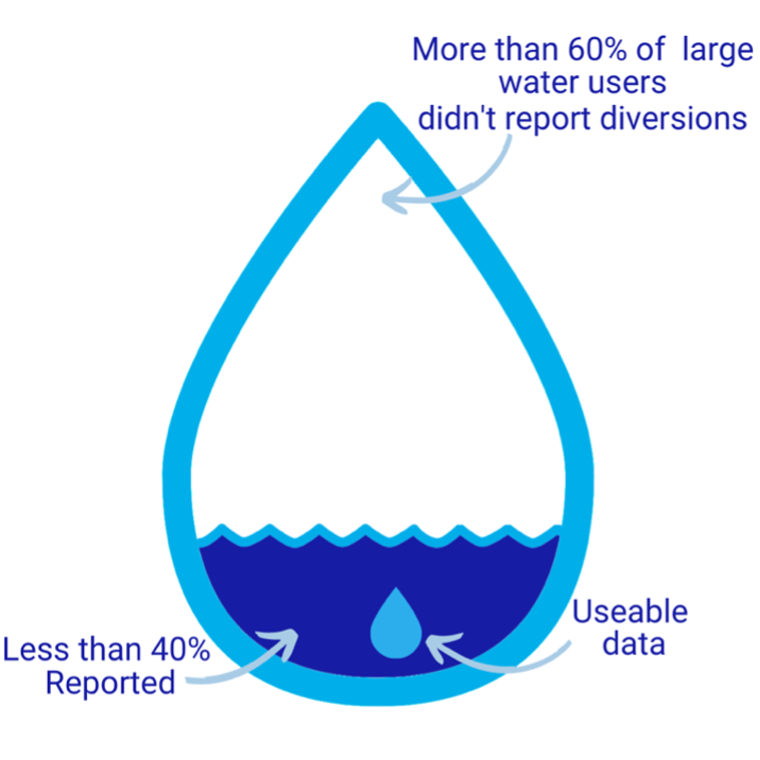Having started 2022 with the driest January and February on record, California is bracing for a third year of drought, creating massive hardship for underserved communities, farmers, and nature. The drought pressures government officials to more precisely manage year-to-year water supply. Policymakers are on the cusp of taking a major step toward modernizing California’s water reporting system.
21st century water management relies on accurate data.
Agricultural and urban water agencies take or “divert” water from California rivers under the state’s water rights system. In 2015, the California Legislature passed SB 88, which required most water right holders that divert more than 10 acre-feet of water per year to measure and report the water they divert. Unfortunately, the system for reporting these diversions doesn’t produce the information needed to manage water under drought conditions.
In 2021, less than 40% of large water users submitted water use information.
Moreover, the State Water Resources Control Board, which oversees the allocation of water in California, can’t use most of the data on the submitted diversion reports because local agencies and the state are using antiquated reporting systems. Incomplete and unreliable diversion data grows the likelihood that small communities across California will lose adequate water supply without warning, sparking preemptive emergency responses from the Water Board.
California is a global capital of high-tech ingenuity. We can do better.
In 2021, Governor Newsom approved significant new funding to modernize the water rights data system. That investment was vital to update the state system, but now focus is needed on the inaccurate and unreliable data itself. Strategic points along watersheds can be fitted with automated instruments that send water-level data to a central state database. An initial $15 million investment could support pilot projects in critical watersheds that are likely to experience cutbacks this summer. This investment will reduce confusion over California’s water supply and better protect water users and the environment.